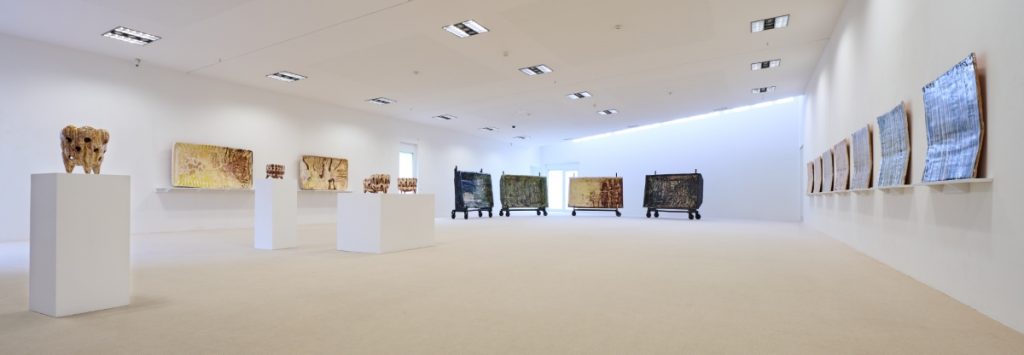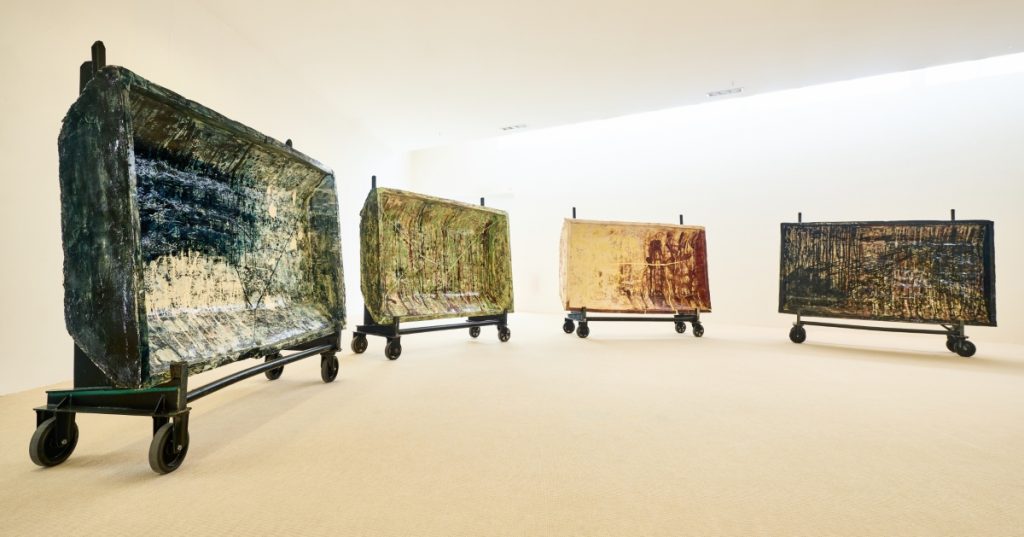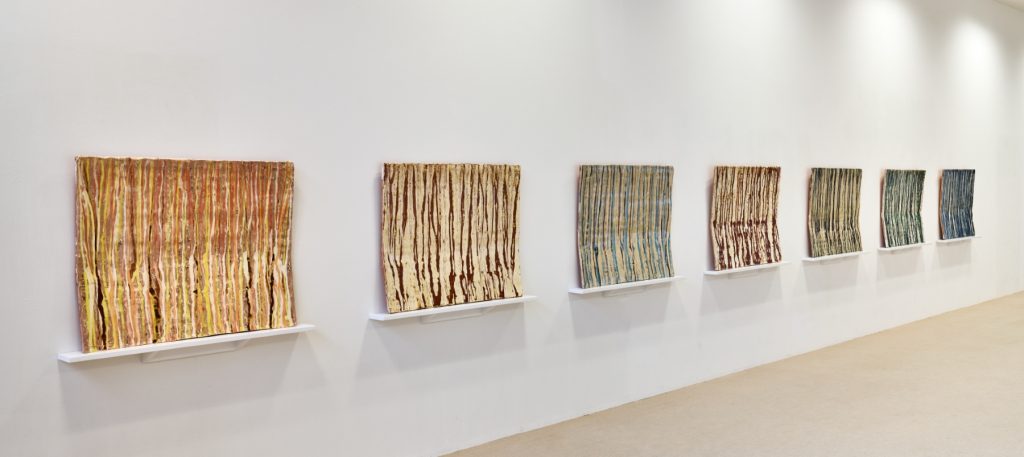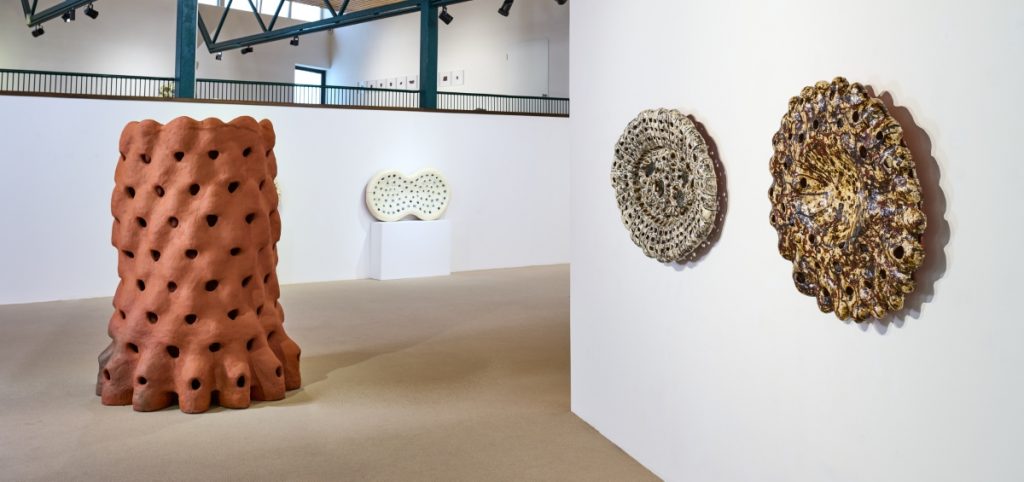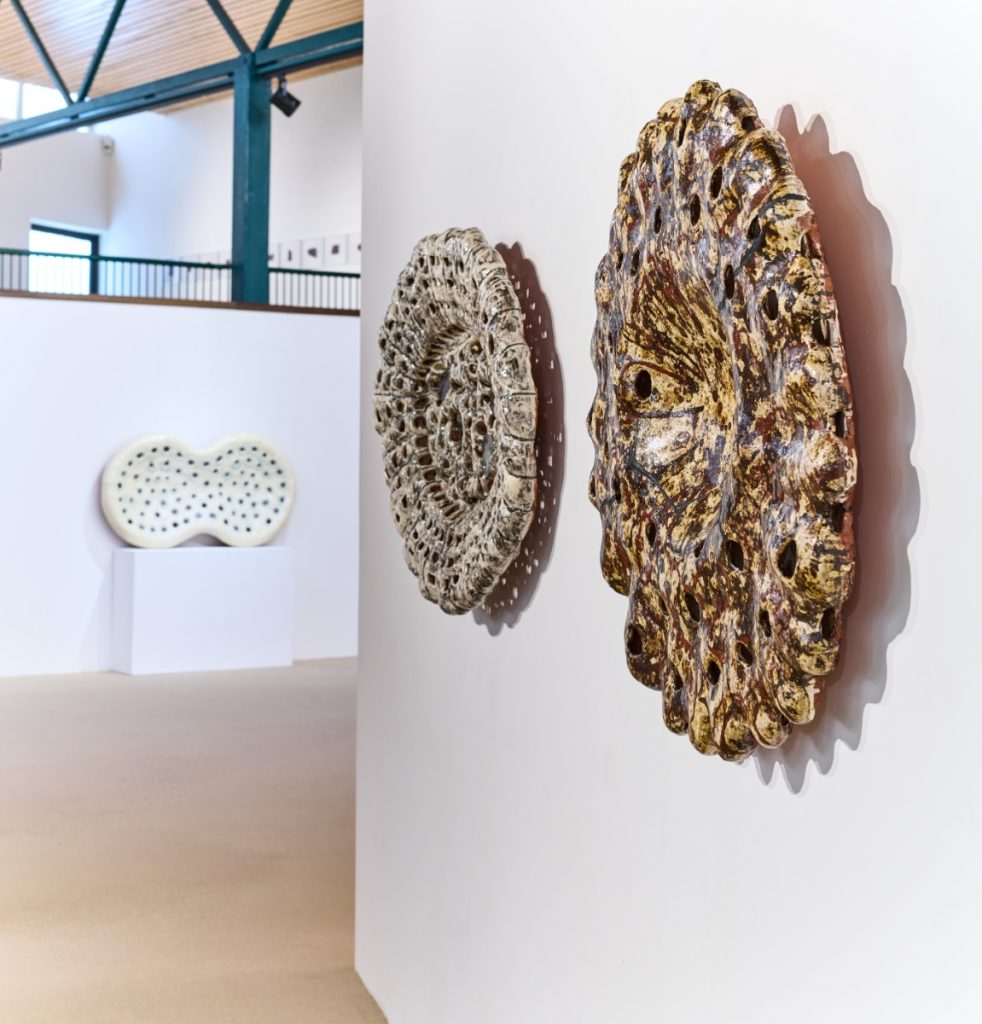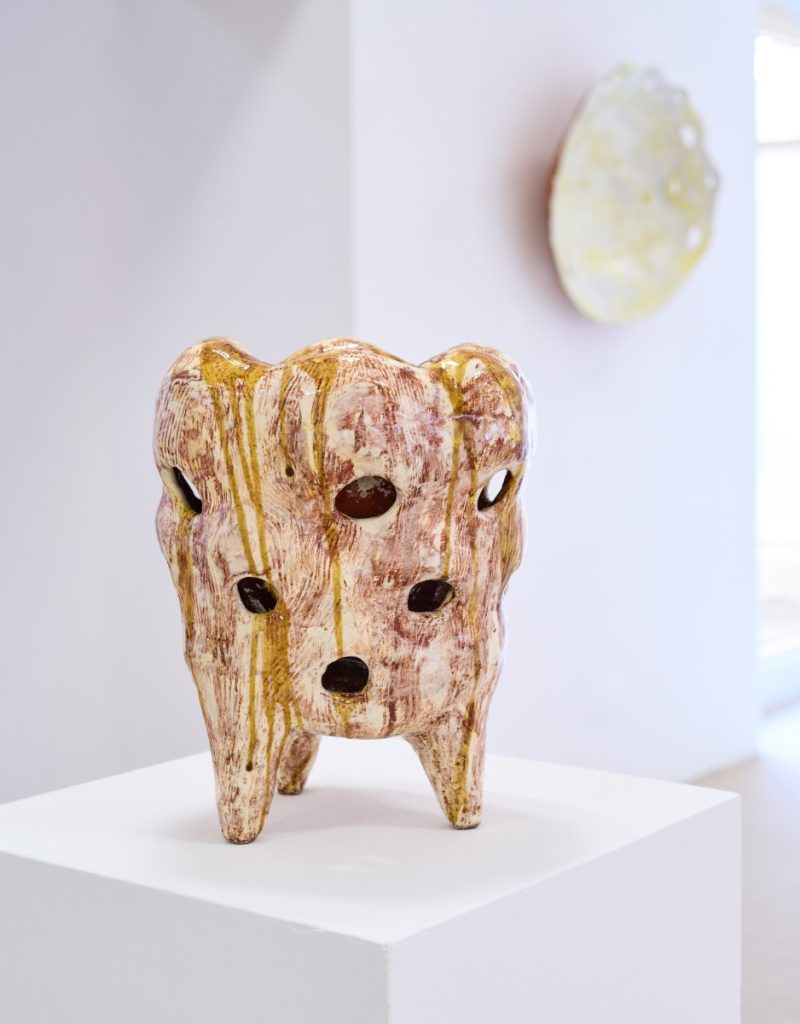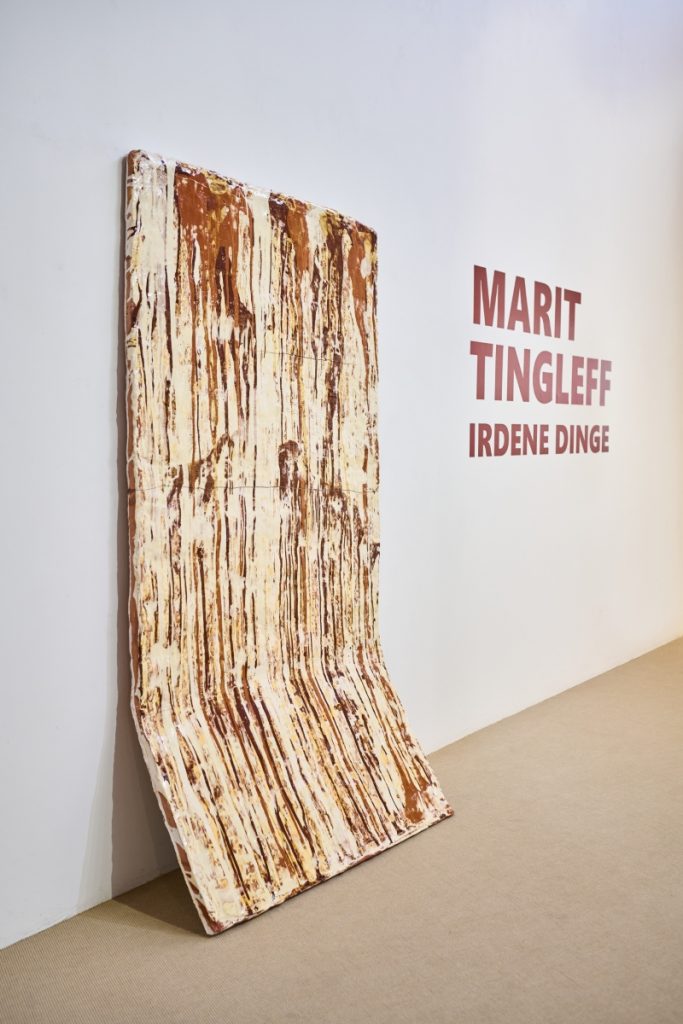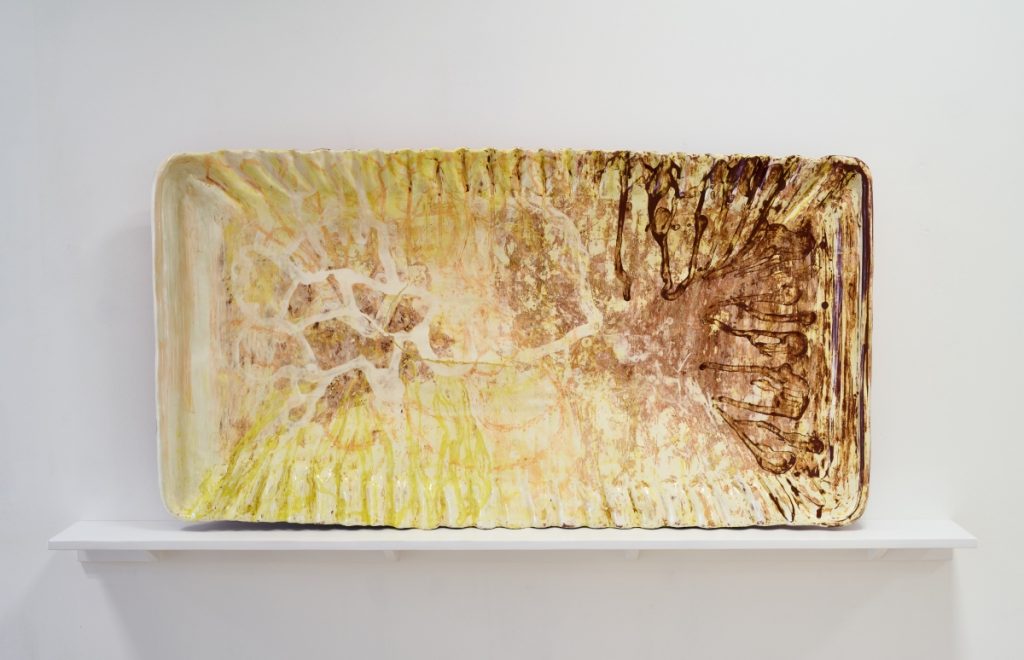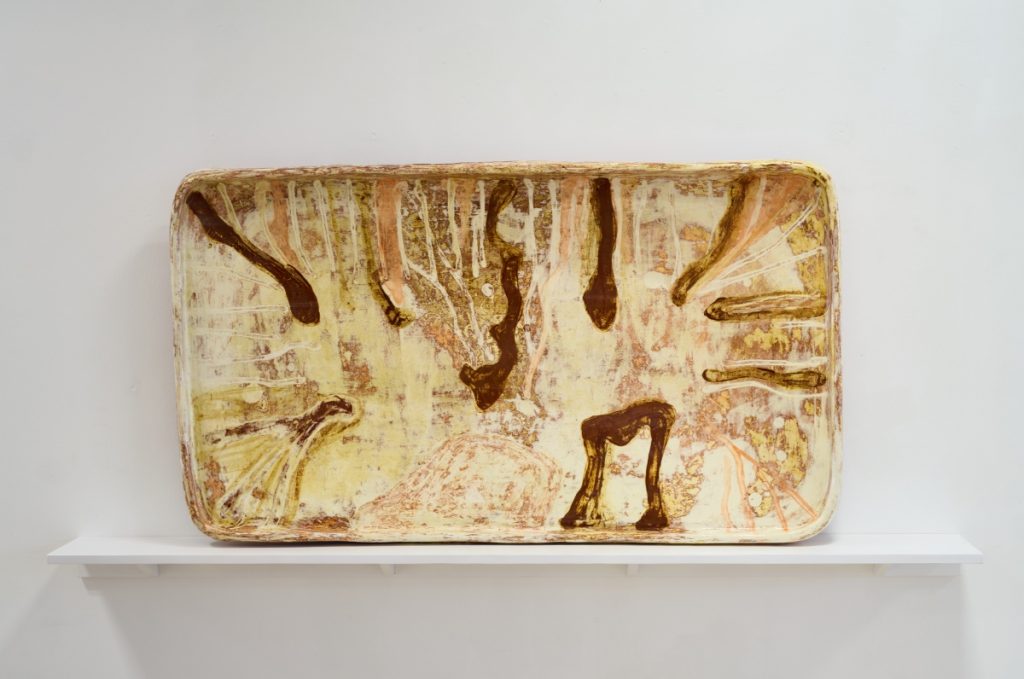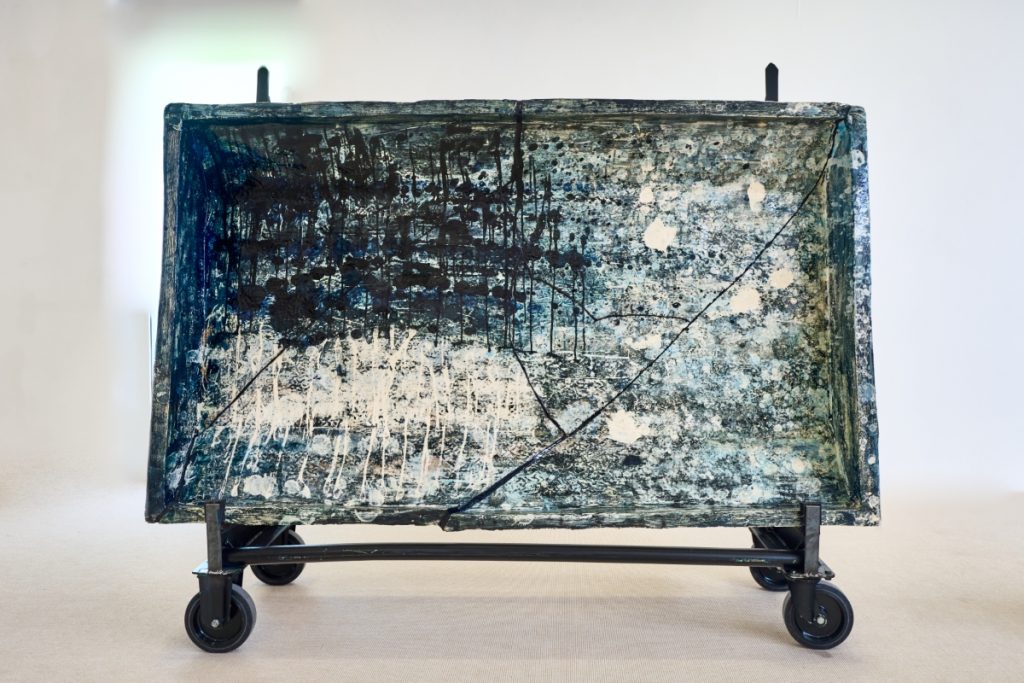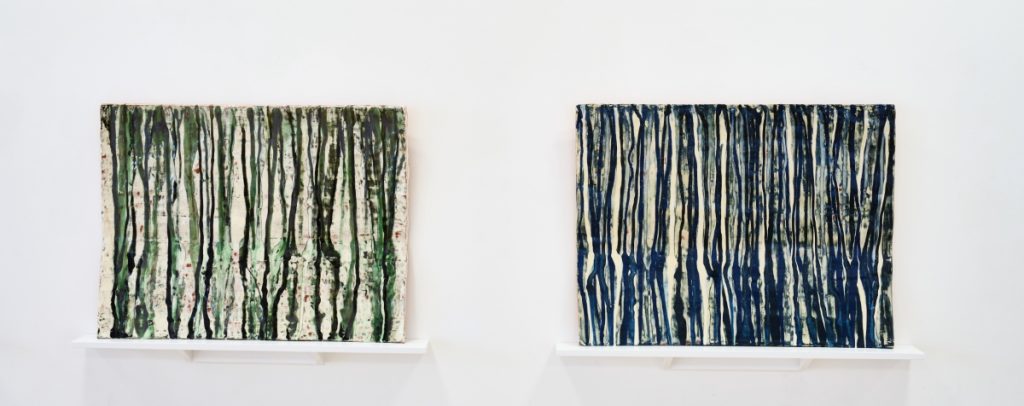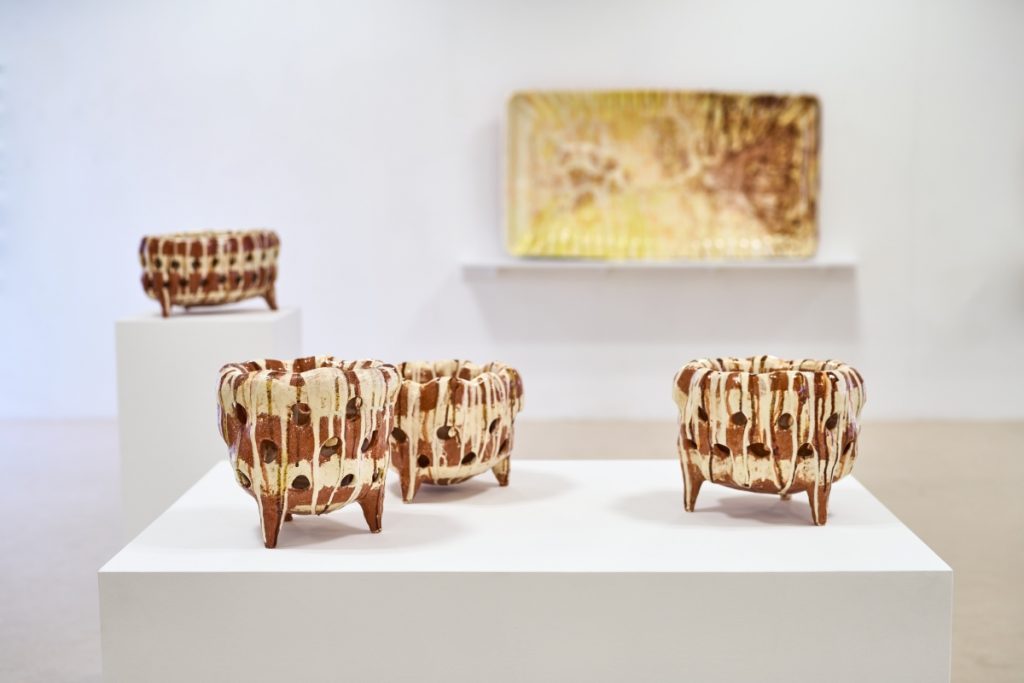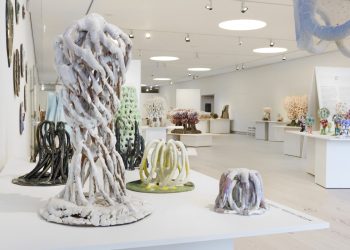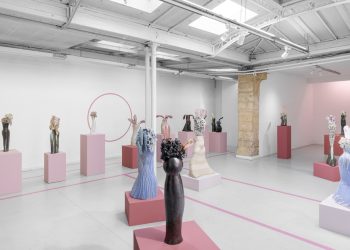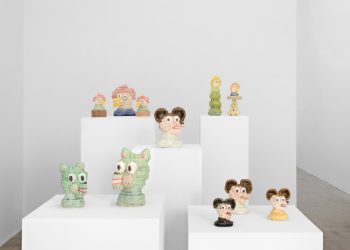Marit Tingleff: Earthen Things at Keramikmuseum Westerwald
June 12 – October 31, 2021
As part of this year’s motto “Compass Europe: Northern Lights” of the Rhineland Palatinate Kultursommer, the Keramikmuseum Westerwald is exhibiting works by the Norwegian artist Marit Tingleff (1954). Marit Tingleff is one of Norway’s best-known contemporary ceramic artists. She first studied at the Academy of Art and Design in Bergen and was head of the ceramics department at the Oslo Academy of Art [KhiO] from 2013 to 2016.
Traditional Scandinavian ceramics
The history of Norwegian ceramics is marked by close ties to Denmark and northern Germany. In the south of the country, a red-firing clay is available, which was used to make low-fired pottery. Tingleff consciously places herself in this tradition and uses the expressiveness of earthenware, which – in contrast to the smooth, highly valued porcelain – creates a closeness to the everyday with its captivating simplicity. She recognised early on that European earthenware holds many possibilities for artistic exploration. An encounter with the ceramics of the Danish architect and designer Thorvald Bindesbøll (1846-1908) was formative for this. His vessels with their freely painted, abstract ornaments inspired her to find her own language in this underestimated field of ceramics.
Supported by women
At the base of her works are traditional, everyday utilitarian ceramics. Tingleff enlarges plates, platters and bowls into powerful monuments. In this way, they become a tribute to the women who cared for the good tableware and proudly presented it on special occasions. “I want to honour all the hands that carried this crockery to the table, and the same hands – often female – that had to wash it and put it away,” she herself says in response.
With a spontaneous, free hand, Marit Tingleff paints the plates with coloured engobes. In doing so, she makes use of the insights of twentieth-century painting. In Tingleff’s work, the ornament emerges from the action. The oversize of the support liberates the painting, which here emerges not from the wrist but from the body.
She washes the speckled, poured and painted layers of slip off the wet clay several times. In a rhythmic process, a sensuous painting gradually emerges. The curved lines and areas of colour tell of the interweaving of the many stories told at kitchen tables.
Landscape
The Nordic landscape also plays an important role in her work. This begins with the choice of material: Tingleff decided early on not to use imported clay, but only the available, local clay. She processes her observations of patterns or colour moods in nature into landscape paintings. In this way she brings the outside world inside. On the one hand, she addresses sublime experiences of nature, but in some works she also refers to environmental catastrophes.
Her largest works, however, could only be realised with clay from the Westerwald. To this end, she visited the deposits of the company Goerg & Schneider in 2016 and personally selected the material. This series of 4 large-format, trough-like forms is presented in the exhibition. With a maximum of ceramic image surface, a panorama of four colour experiences of the landscape stands out.
Earthen things
Another working group are her double-walled objects, which are only remotely reminiscent of kitchen utensils such as stoves or sieves. Here, the double layer does not emerge from several layers of paint or references to table culture, but is embodied autonomously in a three-dimensional form. The enigmatic forms prompted the Danish art critic Poul Erik Tøjner to then call them “Tingleffs”. For the first syllable of their surname actually means “thing” in the Norwegian language and is thus perhaps the best way to describe these strange things. They are double-walled, but not double-meaning, and reject the question of their relevance. They were not yet known. But now they have taken up their space in the Keramikmuseum. Especially at a time when encounters only take place digitally and the haptic definitely comes up short, we look forward to these wonderful earthen things.
Contact
+49 (0) 2624 94 60 10
kontakt@keramikmuseum.de
Address
Keramikmuseum Westerwald
Lindenstraße 13
56203 Höhr-Grenzhausen
Germany
Photos by Helge Articus



